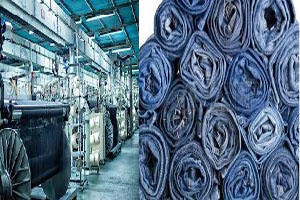
Indian denim manufacturing industry urge govt to increase support
YarnsandFibers News Bureau 2017-12-07 14:00:00 – New DelhiIndian denim fabric manufacturing industry a the sunrise industry in the entire textile value chain of India is currently under stress. To bring the industry out of this situation the Denim manufacturers in India, led by the New Delhi based Denim Manufacturers Association (DMA), have urged the Central government to immediately announce increased support in the form of some enhancement in present duty drawback rates and extending some more benefits under various schemes such as ROSL, MEIS, Focus Product, Focus Market, etc which will enable them to tap the potential of export market.
At present, there are 46 denim fabric manufacturing mills operating in India, compared to 30 mills in 2012. The installed denim fabric production capacity has also increased from 800 million metres in 2012 to 1,500 million metres in 2017, making it the world’s second largest denim fabric producer, next only to China. Further, another 150 million metres of fabric production capacity expansion is in the pipeline.
As against the capacity of 1,500 million metres, the current domestic consumption is approximately 750-800 million metres, and export is 200 million metres. Thus, the industry is facing over capacity situation.
Post introduction of the Goods and Services Tax (GST) from July 1 this year, the denim industry has temporarily closed down approx. 30-40 percent of its capacity across the board and is currently operating at approx. 60-70 percent capacity due to slowdown in demand and over capacity situation in the industry, said DMA chairman Sharad Jaipuria. Presently, the industry is bleeding and if the situation continues, there can be more production cuts.
Besides over capacity, the denim fabric making industry has also been paralysed because denim needs to be cut, sewn and washed before it can be marketed. These upstream activities are majorly done in the unorganized sectors located at the small-scale industry (SSI) hubs of Gandhi Nagar and Tank Road in Delhi, Ulhasnagar in Mumbai and Bellary near Bangalore.
These hubs mainly slowed down due to the liquidity crunch in the economy post demonetisation and slow acceptance of GST by small players to become part of the formal economy. As approx. 85 percent of the fabric is sold in the domestic market, denim fabric mills are badly hit, said Akhilesh Rathi, director of Bhaskar Denim.
Accoring to Amit Dalmia of R&B Denims, since the upstream activities of garment sewing and washing in SSI hubs will take a while before they change for working smoothly with the formal banking system, they do not foresee any short-term recovery of market in the near future. This has led to shutdown / slowdown of many denim mills and loss of jobs in this industry.
Considering the grave situation for denim industry, Ashima director Atul Singh said that the government needs to announce some enhancement in present duty drawback rates and also extend some more benefits under ROSL scheme, MEIS scheme, Focus Product and Focus Market scheme so that denim mills can competitively tap the potential of export market and try to shift from the stress of domestic market.
The negative impact of oversupply situation, coupled with low demand and liquidity crunch in the domestic market, has started becoming visible on the sales and profit volume of top denim mills in India in Q2 FY17-18 said Arpit Jain, VP-research at Arihant Capital & Brokerage and similar impact looks to continue in Q3 as well.
Market Intelligence
Ask for free sample Report

experience
Customer Base
dedicated team
Countries Served Worldwide









